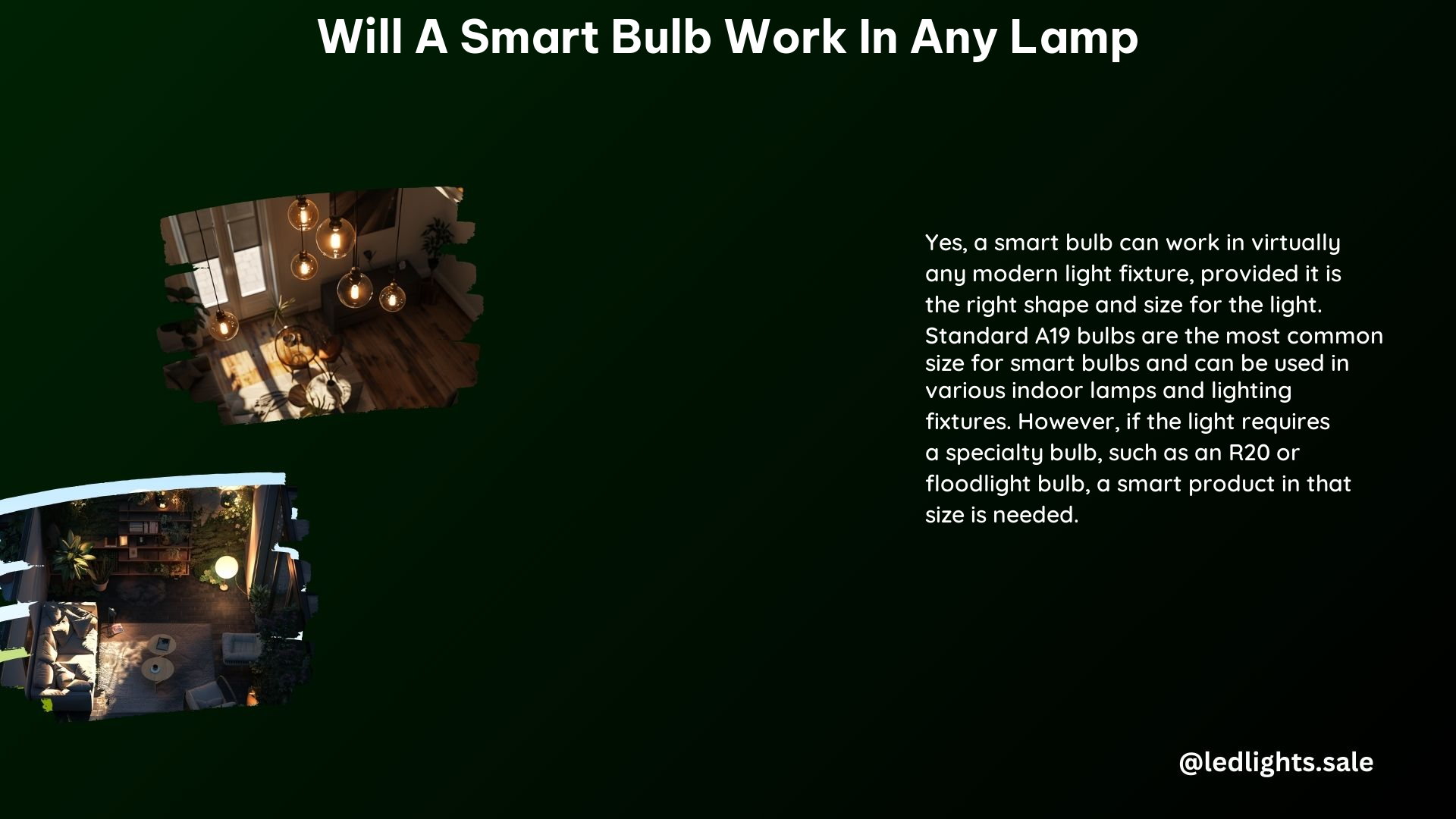Smart bulbs have revolutionized the way we illuminate our homes, offering a wide range of features and benefits over traditional incandescent or LED bulbs. One common question that arises is whether a smart bulb can be used in any lamp or lighting fixture. The answer is generally yes, but there are some important considerations to keep in mind.
Socket Compatibility: Ensuring a Proper Fit
The first and most crucial factor in determining if a smart bulb will work in a lamp is the socket compatibility. Smart bulbs come in a variety of shapes and sizes, but the most common is the standard A19 bulb, which has a medium (E26) base. This size is compatible with the majority of indoor lamps and lighting fixtures.
However, it’s essential to check the specific socket size and type of your lamp before purchasing a smart bulb. Some lamps may have smaller or larger sockets, such as the candelabra (E12) or the mogul (E39) base. In these cases, you’ll need to find a smart bulb that matches the socket size to ensure a proper fit and secure connection.
To determine the socket size of your lamp, you can refer to the manufacturer’s specifications or physically measure the diameter of the socket. Alternatively, you can take the lamp to a hardware store and compare it to the available smart bulb options to find the perfect match.
Electrical System Compatibility: Ensuring a Seamless Integration

The next consideration is the electrical system compatibility of your lamp. Smart bulbs typically require a 120V AC power supply, which is the standard household voltage in many countries. Most modern lamps, regardless of their age, will be compatible with this voltage.
However, there are a few exceptions to keep in mind:
-
Dimmable Lamps: If your lamp has a built-in dimmer switch, it’s essential to ensure that the smart bulb is compatible with the dimmer. Some smart bulbs may not work properly with traditional dimmer switches, so it’s crucial to check the manufacturer’s specifications or consult with a professional electrician.
-
Three-Way Lamps: Smart bulbs can generally be used in three-way lamps, but the setup may require some additional steps. You may need to connect two smart switches to create a three-way switch setup without any hard wiring.
-
Lamp Power Switches: In some cases, you may need to keep the lamp’s power switch in the “on” position and control the smart bulb using the app or voice assistants, such as Alexa or Google Home.
It’s important to note that the age of the lamp does not necessarily affect its electrical compatibility with a smart bulb. As long as the lamp’s electrical system is functioning properly and can provide the necessary power, a smart bulb should work seamlessly.
Smart Switch Compatibility: Enhancing Control Options
Smart bulbs can work with both regular and smart switches. When using a regular switch, the switch needs to be physically flipped to the “on” position for the smart bulb to function fully. This allows you to control the bulb’s features, such as dimming or color changing, using the app or voice commands.
On the other hand, smart switches offer more advanced control options. These switches can be connected to the smart bulb, allowing you to control the bulb even when the switch is in the “off” position. This can be particularly useful if the lamp is located in a hard-to-reach area or if you want to control the bulb from multiple locations.
When using smart switches, it’s essential to ensure that the switch is compatible with the smart bulb’s wireless protocol, such as Wi-Fi or Bluetooth. Some smart bulbs may also require a dedicated smart home hub or bridge to integrate with the switch.
Technical Requirements: Ensuring Seamless Connectivity
Most smart bulbs require a Wi-Fi connection to communicate with the app or voice assistants. However, some smart bulbs also have Bluetooth connectivity as a backup option, allowing them to operate even when the Wi-Fi network is down.
It’s important to ensure that your lamp’s location has a strong and stable Wi-Fi signal, as this will ensure reliable connectivity and control of the smart bulb. If the lamp is located in an area with poor Wi-Fi coverage, you may need to consider a Wi-Fi extender or mesh network to improve the signal strength.
Additionally, smart bulbs are generally more energy-efficient and have a longer lifespan compared to traditional incandescent or LED bulbs. This can result in cost savings over time, as well as reduced environmental impact.
Conclusion
In summary, a smart bulb can work in any lamp, provided that the bulb’s socket size and the lamp’s electrical system are compatible. By considering factors such as socket compatibility, electrical system compatibility, smart switch compatibility, and technical requirements, you can ensure a seamless integration of a smart bulb into your existing lamps and lighting fixtures.
Remember to always refer to the manufacturer’s specifications and consult with a professional electrician if you have any doubts or concerns about the compatibility of your lamp and smart bulb. With the right setup, you can enjoy the benefits of smart lighting and transform your living spaces with the convenience and versatility of smart bulbs.
References:
– Smart Home Security: Smart Lights
– Can Smart Bulbs Work with Regular and Smart Switches?
– Can I Use This Smart Bulb in This Lamp?
– Everything You Need to Know Before Buying a Smart Light Bulb
– Can You Put a Smart Bulb into Any Light Fitting?
